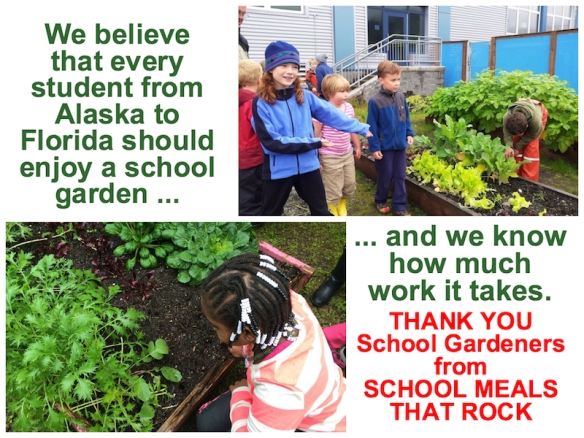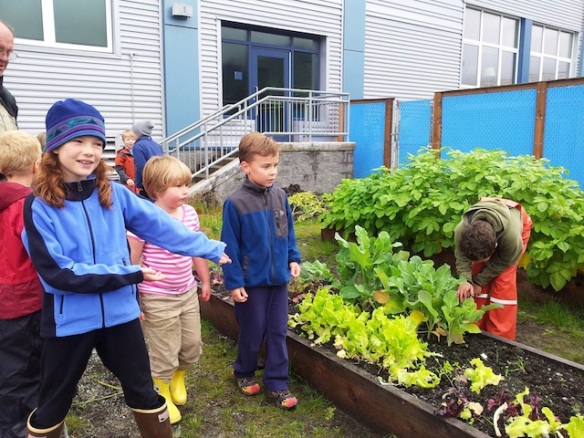As a devoted fan of Julia Child since the days of the earliest days of The French Chef on black and white TV, I know that she was always a culinary and educational trendsetter. Back in 1995, she was a co-founder of Days of Taste®, a national discovery-based program of The American Institute of Wine & Food for 4th and 5th graders. “In this age of fast and frozen food, we want to teach school children about real food – where it is grown and how it is produced – so that they can develop an understanding and appreciation of how good food is supposed to taste.”
Last week was the 101st anniversary of Julia Child’s birth – an event that I always honor personally and professionally. As I was updating the daily entries on School Meals That Rock, I realized how much Julia Child would love to see the very real revolution that has take place in school meals. Fresh, local, lovingly prepared and beautifully served breakfasts, lunches, snacks and even suppers are served across the USA, not just in a few foodie enclaves like Portland (OR) and Berkeley (CA), but in a wide range of school nutrition programs with a real commitment to good food for hungry students.
If I could do some culinary time travel and take Julia to lunch, as Bob Spitz was lucky enough to do in Dearie, here are six school cafeteria hot spots we would hit in the Western states. These schools vary widely in location, demographics and staff training, but all have one thing in common: They are among the growing trend of districts dedicated to serving made-from-scratch food, supporting local farmers and ranchers, and teaching children how good food tastes.

Lake Stevens, Washington, Mollie Langum, Nutrition Supervisor
Mollie and her staff are true farm-to-table champions, as showcased in their “I Made A Rainbow at the Salad Bar” event. Washington-grown produce is not just for special occasions though; it’s an every day item in Lake Stevens cafeterias (just east of the metro Seattle area). With the right kind of “peer pressure,” students help promote produce, with giant strawberry costumes and as 5th grade fruit/veggie ambassadors.
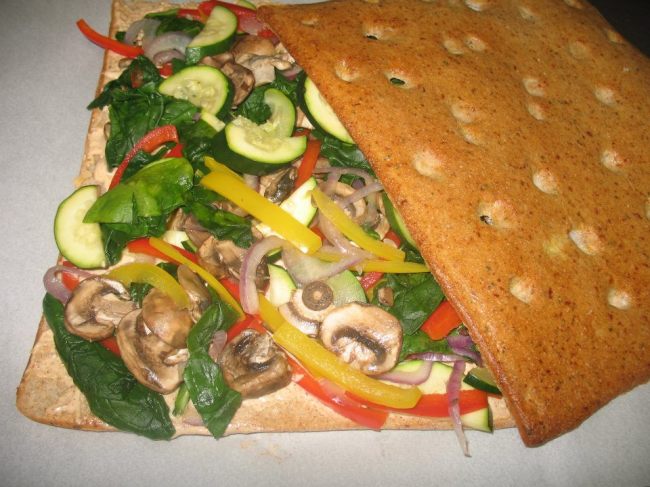 Bethel, Oregon, Jennie Kolpak, RD, Nutrition Supervisor
Bethel, Oregon, Jennie Kolpak, RD, Nutrition Supervisor
Down I 5, in Eugene, Oregon, Jennie has developed a very impressive Harvest-of-the-Month program. Willamette Valley apples, pears, melons, carrots, bok choy and more show up on Bethel menus. This made-to-order Willamette High School panini with balsamic marinated veggies is just one delicious example. This year, they are going “hyper-local” with a new commercial size greenhouse on school grounds.
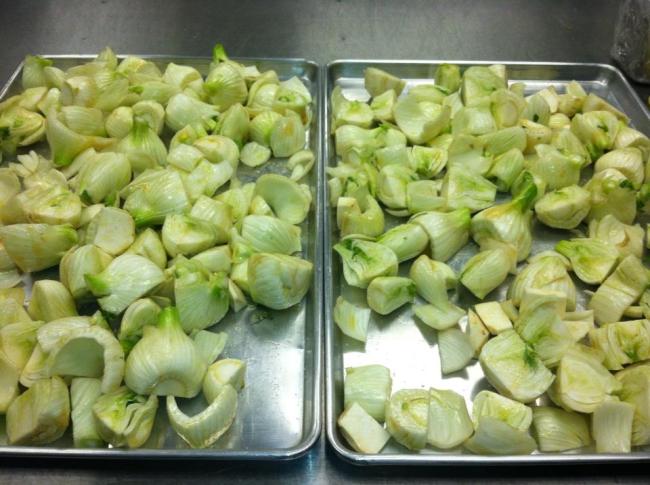 Solvang, California, Chef Bethany Markee, Viking Café
Solvang, California, Chef Bethany Markee, Viking Café
Trading fine dining for a cafeteria, Bethany leads a Central California school food revolution – as this Honey Roasted Organic Fennel for the salad bar clearly shows. Thanks to a partnership with Santa Ynez Valley Fruit and Vegetable Rescue, the Viking Café is able to regularly serve fresh, organic produce and thanks to a new school herb garden, the seasonings will soon be very local as well.
 Chandler, Arizona, Catherine Giza, Director and Wes Delbridge, RD, Supervisor
Chandler, Arizona, Catherine Giza, Director and Wes Delbridge, RD, Supervisor
I bet Julia would appreciate the high-tech side of this large multi-cultural district with its trend-setting iPhone app. And, I know that she would be equally impressed with their personal touch on the 250 hand-tossed pizzas with whole grain, made-from-scratch dough and homemade marinara sauce!
 Provo, Utah, Jenilee McComb, Director and Colleen Dietz, Assistant
Provo, Utah, Jenilee McComb, Director and Colleen Dietz, Assistant
Breakfast or lunch, Provo’s cafeterias serve freshly prepared, locally sourced meals to the lucky students in this mid-size district just south of Salt Lake City. The school nutrition professionals in each school take justifiable pride in their award-winning program and the Facebook page proudly lists the farms and farmers who grow food for their kitchen. Provo students know where their food comes from!
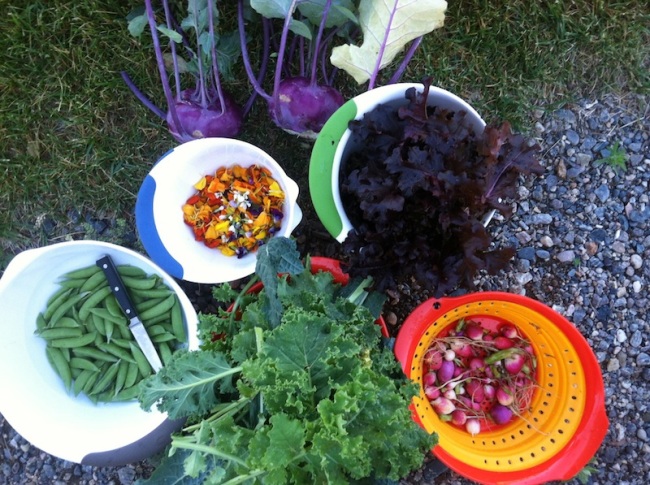 Ennis, Montana, Tammy Wham, Director and Natasha Hegmann, FoodCorps
Ennis, Montana, Tammy Wham, Director and Natasha Hegmann, FoodCorps
It might take us a bit longer to get to Ennis, a southwestern Montana community of less than 1,000 with about 400 students K-12. However, I can guarantee that it would be worth the drive! Tammy and her cooks make nearly everything from scratch and thanks to Montana FoodCorps they now have a greenhouse and school garden (with club and summer camp) for incredible, edible produce year-round!

